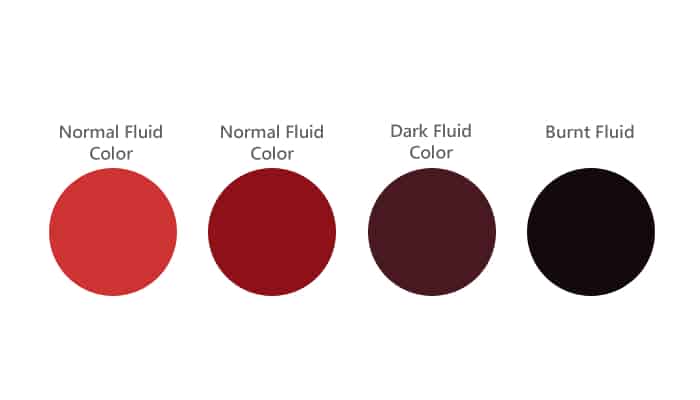Understanding Transmission Fluid Specifications
When it comes to keeping your 2012 Acadia running smoothly, understanding the right transmission fluid is crucial. The transmission fluid is the lifeblood of your vehicle’s transmission system, ensuring that everything operates seamlessly. Using the correct type of fluid not only enhances performance but also prolongs the life of your transmission.
Manufacturer’s Recommendations
| Popular posts |
|---|
| What to do to prolong the life of your manual gearbox |
| Automatic transmission: what it is, how it works |
For the 2012 GMC Acadia, the manufacturer recommends using Dexron VI transmission fluid. This fluid is specifically formulated to meet the needs of GM vehicles, providing optimal protection and performance.
Why Dexron VI?
Dexron VI is a synthetic fluid that offers several advantages over older transmission fluids. Here are some key benefits:
- Improved Performance: Dexron VI is designed to provide better lubrication and heat resistance, which is essential for the demanding conditions of modern driving.
- Extended Drain Intervals: This fluid allows for longer intervals between changes, which can save you time and money in the long run.
- Enhanced Protection: It helps to protect against wear and tear, reducing the likelihood of costly repairs down the road.
- Compatibility: Dexron VI is backward compatible with earlier Dexron fluids, making it a versatile choice for many GM vehicles.
Specifications to Consider
When selecting transmission fluid, it’s essential to pay attention to certain specifications. Here are the key specifications for Dexron VI:
- Viscosity: Dexron VI has a viscosity grade of 6.0 cSt at 100°C, ensuring optimal flow and protection under various temperature conditions.
- Color: Typically, Dexron VI is a bright red color, which helps in identifying leaks or fluid changes.
- Flash Point: The flash point is around 205°C (401°F), indicating its ability to withstand high temperatures without breaking down.
- Pour Point: The pour point is approximately -54°C (-65°F), ensuring that the fluid remains effective even in extremely cold conditions.
Confirmation from Authoritative Sources
The recommendation for Dexron VI is not just a marketing gimmick; it’s backed by extensive testing and validation from GM. According to the GM Powertrain Engineering, using the specified fluid is crucial for maintaining the integrity and performance of the transmission.
Additionally, independent automotive experts and fluid manufacturers confirm that Dexron VI meets or exceeds the requirements for modern automatic transmissions. Using anything other than the recommended fluid can lead to subpar performance and potentially severe damage to your transmission system.
In summary, for your 2012 Acadia, sticking to Dexron VI transmission fluid is not just a suggestion; it’s a necessity for optimal performance and longevity.
Recommended Oil Brands for Your Transmission Fluid
When it comes to keeping your 2012 Acadia’s transmission running smoothly, using the right transmission fluid is only part of the equation. The brand of fluid you choose can also make a significant difference in performance and longevity. Based on feedback from forums and owner experiences, here are some recommended oil brands that have garnered positive reviews among Acadia owners.
Top Brands for Transmission Fluid
Here’s a rundown of some of the most recommended brands for Dexron VI transmission fluid, as shared by fellow GMC Acadia owners:
- ACDelco: As the original equipment manufacturer (OEM) for GM vehicles, ACDelco’s Dexron VI is often the go-to choice for many Acadia owners. Users appreciate its reliability and compatibility with their vehicles. Many forum members have reported smoother shifting and improved performance after switching to ACDelco.
- Mobil 1: Known for its high-quality synthetic oils, Mobil 1’s Dexron VI fluid has received favorable reviews for its performance in extreme conditions. Owners have noted that it provides excellent protection against wear and thermal breakdown, making it a solid choice for those who drive in varied climates.
- Valvoline: Valvoline’s Dexron VI fluid is another popular option among Acadia owners. Users have reported positive experiences with its smooth shifting and overall performance. Many appreciate the brand’s long-standing reputation in the automotive industry, which adds a layer of trust when selecting their transmission fluid.
- Castrol: Castrol’s transmission fluid has been praised for its ability to maintain performance over time. Owners have mentioned that it helps reduce shuddering and slipping, especially in older models. This brand is often recommended for those who want a reliable option that won’t break the bank.
- Royal Purple: Known for its high-performance synthetic oils, Royal Purple’s Dexron VI fluid is favored by those who prioritize performance. While it may be on the pricier side, many users claim that the enhanced protection and performance justify the cost. Feedback from forums indicates that it can significantly improve shifting quality.
What Owners Are Saying
The automotive forums are buzzing with discussions about transmission fluid choices, and the feedback from Acadia owners is invaluable. Here are some common themes and experiences shared by users:
- Performance Improvement: Many owners have reported noticeable improvements in shifting smoothness and responsiveness after switching to recommended brands. A common sentiment is that the right fluid can make a world of difference in driving experience.
- Longevity: Several users have shared that using high-quality fluids has led to fewer transmission issues over time. Owners who have opted for OEM fluids like ACDelco often mention that they experience fewer problems compared to those who used generic brands.
- Price vs. Quality: While some owners are tempted to go for cheaper options, many have learned the hard way that skimping on transmission fluid can lead to costly repairs. Feedback indicates that investing in a reputable brand pays off in the long run.
- Cold Weather Performance: For those living in colder climates, several users have noted that certain brands, like Mobil 1 and Valvoline, perform exceptionally well in low temperatures, ensuring smooth operation even in frigid conditions.
Final Thoughts from the Community
While the choice of transmission fluid may seem straightforward, the experiences shared by fellow Acadia owners highlight the importance of selecting a reputable brand. The consensus is clear: using a high-quality Dexron VI fluid can enhance your vehicle’s performance and longevity. Whether you opt for ACDelco, Mobil 1, Valvoline, Castrol, or Royal Purple, you’re likely to see positive results that keep your 2012 Acadia running smoothly for years to come.
Understanding Change Intervals for Transmission Fluid
When it comes to maintaining your 2012 Acadia, knowing when to change your transmission fluid is crucial for ensuring optimal performance and longevity. The change interval can vary based on driving conditions, but there are general guidelines that can help you determine when it’s time to make that change.
Recommended Change Intervals
For the 2012 GMC Acadia, the general recommendation for changing the transmission fluid is every 50,000 to 100,000 miles (approximately 80,000 to 160,000 kilometers). However, this can depend on several factors:
- Driving Conditions: If you frequently drive in severe conditions—such as heavy traffic, extreme temperatures, or towing—consider changing your fluid closer to the 50,000-mile mark.
- Fluid Condition: Regularly checking the condition of your transmission fluid can help you gauge when it needs to be changed. If the fluid appears dark or has a burnt smell, it’s time for a change.
- Manufacturer Guidelines: Always refer to your owner’s manual for specific recommendations tailored to your vehicle. GM provides guidelines based on extensive testing and engineering data.
Partial Transmission Oil Changes
In many cases, a full transmission fluid change can only be achieved by removing the transmission from the vehicle, which is a labor-intensive and costly process. This is where partial transmission oil changes come into play.
What is a Partial Transmission Oil Change?
A partial transmission oil change involves draining a portion of the old fluid and replacing it with new fluid. This method is often more practical and cost-effective for vehicle owners. Here are some key points to consider:
- Fluid Replacement: During a partial change, typically about 30-50% of the fluid is replaced. While this doesn’t remove all the old fluid, it does help dilute the contaminants and degraded fluid present in the system.
- Frequency: Many mechanics recommend performing partial changes more frequently, such as every 15,000 to 30,000 miles (24,000 to 48,000 kilometers), especially if you drive under severe conditions.
- Cost-Effectiveness: Partial changes are generally less expensive than full fluid changes, making them a more accessible option for regular maintenance.
Justification for Partial Changes
Statistical data and automotive studies support the effectiveness of partial transmission fluid changes. According to the Automatic Transmission Rebuilders Association (ATRA), regular fluid changes—whether partial or full—can significantly reduce the risk of transmission failure.
Research indicates that contaminants and heat are the primary culprits behind transmission wear. By regularly replacing a portion of the fluid, you can help mitigate these issues. A study from the Society of Automotive Engineers (SAE) found that maintaining clean transmission fluid can extend the life of the transmission by up to 50%.
Furthermore, many automotive professionals advocate for a proactive approach to transmission maintenance. By opting for partial changes, you can keep your transmission fluid in better condition without the need for a full service every time, thus saving both time and money.
In summary, understanding the change intervals and the benefits of partial transmission oil changes can help you maintain your 2012 Acadia effectively. Regular maintenance is key to ensuring your vehicle runs smoothly for years to come.
What Color Should Transmission Fluid Be?


